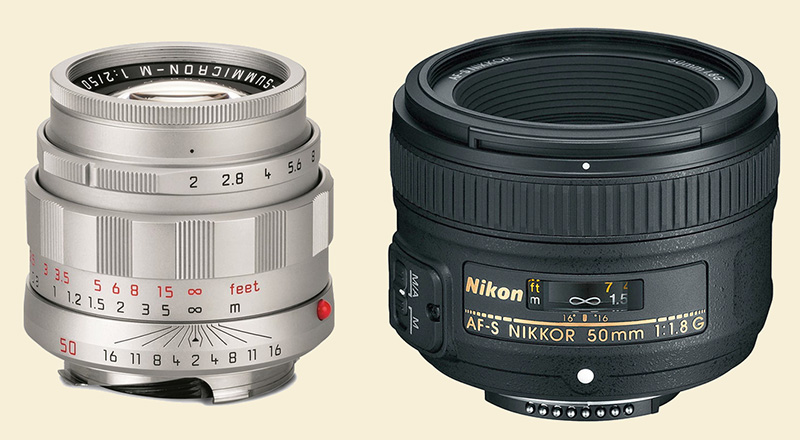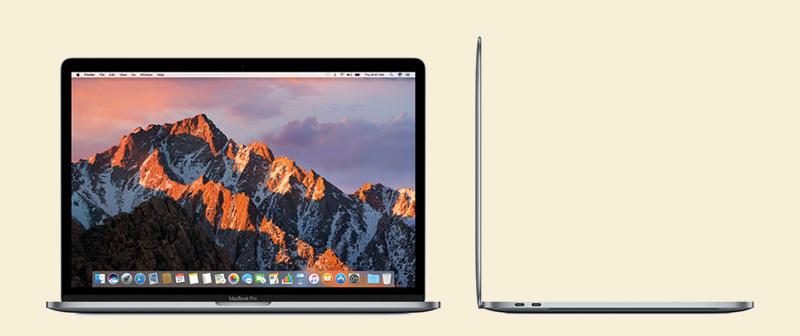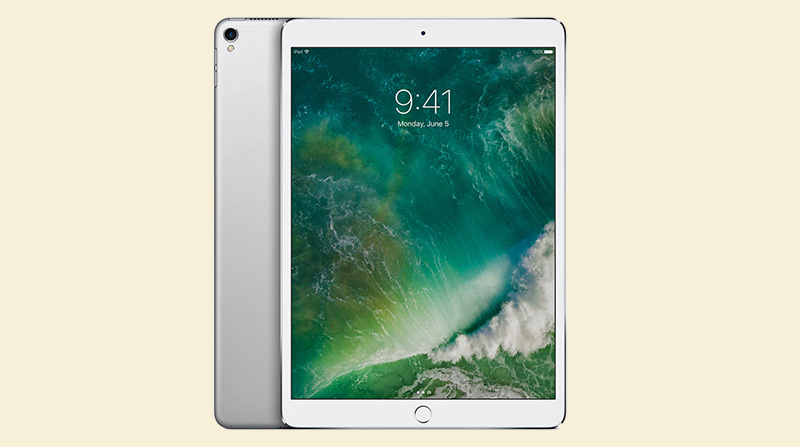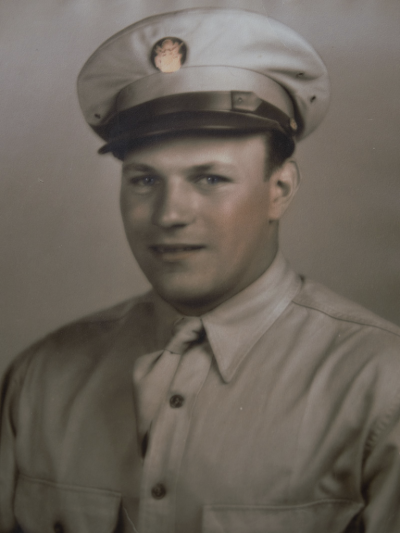
The new Leica APO-ASPH. LHSA and the Nikkor 50mm ƒ/1.8G (not to scale)
Leica has introduced a truly beautiful new lens. It's a commemorative variant of the current APO-ASPH 50mm Summicron, the modern iteration of Leica's most famous lens. Or the lens that made it famous, as you wish. It commemorates the 50th anniversary of the LHSA, an organization which did not change its initials even though it did change its name—the initials originally stood for Leica Historical Society of America and the organization is currently called The International Leica Society. It is "an independent, nonprofit organization [and a rich fellowship of friendships —Ed.] dedicated to all aspects of the Leica camera, including photography, research, history, documentation and collecting." Quite worthy of honoring.
(Somebody should start a Society of Friends of Fuji—SoFoF. All it would need would be a website, an occasional e-newsletter, some gateway ritual signifying membership, and a forum.)
To honor the occasion, Leica itself has issued the Leica APO-Summicron-M 50mm ƒ/2 ASPH 'LHSA,' a lens that looks old but is optically the same as the latest version. Absolutely beautiful. There it is, pictured, at the top left, and here it is at the Leica website, and here it is at B&H.
-
[Reality Check section—skip if you are a staunch defender of Leica.] It does however cost $9,595. That makes it exactly 43.2268 times better than the Nikon AF-S Nikkor 50mm ƒ/1.8G, from a company that doesn't know how to make lenses, except that the APO-Summicron ASPH. LHSA is slightly slower and has the advantages of not being autofocus.
(I'm being sarcastic, but actually the speed difference is not significant. For all practical purposes, ƒ/1.7 and ƒ/1.8 are effectively the same as ƒ/2...ƒ/1.8 is only 1/3rd of a stop from ƒ/2 and not only do many camera/lens systems not achieve a tolerance greater than about 1/6th of a stop anyway, but 1/3 stop differences are not visible or technically significant in all but the most specialized situations. It's a good rule of thumb to stick with differences of a full stop or more when upgrading to faster lenses, or in choosing between competing options. I wouldn't think twice about the difference between ƒ/2 and ƒ/1.8. It really doesn't matter.)
This reminds me of a couple of memories, as many things do now that I am a Photosaurus. One, a gray Winter day standing at the counter at Helix Camera in Chicago, up on the second floor of its location overlooking the Eisenhower Expressway, talking to a bored, cynical, fatalistic counterman (I liked camera store countermen, and miss 'em) while fondling some Leica equipment. He said that although it had that reputation, most Leica stuff wasn't really so very expensive, because for the most part it only cost 50% more than the best Nikon equipment. The opinion he expressed at the time was that as long as the cost of Leica gear was "within sight" of the cost of Nikon gear, "they're still all right." "You pay a premium for the build quality," he opined.
The other memory is that once in the late 1990s I decided to run a test to see if Leicaphiles could actually recognize pictures taken with Leica lenses. I meant to make ten prints with a variety of lenses, three of them Leica lenses, and see if Leica people could pick out the Leica ones. But I ended up not following through (gee, there's something that's not typical of me—Big Plans Man, Pie in the Sky man, that's Mike), and I only made, I think, five or six. Two of them were more or less the same picture, one made with the "tabbed" 50mm Summicron (from John Hicks), 1979–1994, designed by Walter Mandler, which I think were going for about $600 and change at the time, and the other made with an Olympus 50mm ƒ/1.8 OM Zuiko, which I scored used for ten bucks. The pictures were of my son and his friend from across the street, taken outside our back door at ƒ/5.6. They were black-and-white 11x14s printed by me in my basement. I showed the pictures to three local photo friends, none of whom could tell which lens was which. Then I sent them to an online Leica fan I knew. Instead of picking one or the other, he sent me a written objection that was long and contentious. The test was not fair, he said, because I was using the wrong film (Tri-X), and not making the enlargements big enough. He demanded that to secure his participation in the trial, I had to agree to use Kodachrome, shoot only on a tripod, and make focus brackets with the M6 because rangefinder focusing was sometimes not exactly accurate. He had a long section about how I could not be fair about my trial prints because I started with the assumption that people could not always tell when a picture was taken with a Leica lens...when, in fact, he could do so...if the conditions were "fair."
I realized that his reaction was likely to be typical, or not atypical, so I got discouraged and gave up.
The person who really had a reaction to those photos was Zander's friend's mother. In the picture, the kid, Sean, who must have been about eight at the time, had a thick mop of shaggy blond hair, including bangs that came very close to blinding him. From the pupils up he resembled a blond sheepdog. He was a friendly kid with a nice smile and I thought the picture was a nice candid of the two boys, so I sent one of the test prints home with him, thinking his parents might like to have it.
The next day Sean showed up at our house after school with about as emphatic a haircut as I've ever seen—a crew cut so close to the skull that his remaining hair was just a shimmer on his head. His mother's critical reaction to the photograph was thus very clear indeed! It was "my kid sure needs a haircut." I took an "after" picture, and somewhere I have those two prints to "commemorate" his mom's critical response to my work.
Before I leave the Reality Check behind, I wanted to also mention that the Zeiss Sonnar T* FE 55mm ƒ/1.8 ZA is also a pretty good lens, even if you could only buy two of them for just the difference in price between the new 50mm LHSA and the optically identical regular plain old everyday nuthin' special Leica 50mm APO-ASPH. I'll bet a Sony Zeiss 55mm on an A7RIII could give the 50mm APO-ASPH on an M10 a run for its money. But that's just guessing. [/Reality Check]
-
Sure would be nice to own both to find out, at leisure, over time. In any event, cost efficiency is not the way to look at this commemorative. The last small increments of quality at the extremes are admittedly expensive, rarity and collectability counts and so does desirability, and there is no question that the Leica 50mm APO-Summicron ASPH., in whichever livery, is one of the very finest 50mm lenses it's possible to own. You wouldn't be putting a foot wrong if you did. It would probably hold its monetary value pretty well, but mostly it would be an investment in geeky happiness that I bet wouldn't dim very much over years of service.
Leica's still good that way.
Mike
[An aside: I really am writing too long these days. I need to stop that. And now, boy, do these dogs need to go out.]
Original contents copyright 2017 by Michael C. Johnston and/or the bylined author. All Rights Reserved. Links in this post may be to our affiliates; sales through affiliate links may benefit this site.
B&H Photo • Amazon US • Amazon UK
Amazon Germany • Amazon Canada • Adorama
(To see all the comments, click on the "Comments" link below.)
Featured Comments from:
toto: "The Leica is 44.2268 times as expensive as, or 43.2268 times more expensive than, the Nikon. And that does not mean that the Nikon is 44.2268 times (or even 43.2268 times) cheaper than the Leica!"
Innumerate Mike replies: I defer to your superior arithmetic!
Rodolfo Canet: "Cannot believe it, Mike! Half the Internet is talking about the $12,800 new Noctilux 75mm ƒ/1.25 and you tell us about a measly $9,895 'Cron.... You can see it here."
Mike replies: I'm a contrarian.
Albert Macfarlane: "I'm sorry you abandoned the attempt to have a blind evaluation of the output from Leica lenses, as this would have been one of the few experiments to have the end result of photographic gear evaluated by human eyesight and opinion. Many of us suspect that this kind of study would unfortunately fail to find the differences we delight to speculate about in gear heavy blogs. One good experiment I remember was published by David Pogue some ten years ago when he showed that average people did not select prints as better when made from higher pixel cameras. The response to this finding was astonishing, and his methods were heavily criticized."
Mike replies: I like those kinds of empirical experiments, and have conducted several over the years. Going further back, I recall an experiment Burt Keppler wrote about in Modern Photography magazine (might have been Pop, but I think it was Modern), where he compared an equivalent Leica 50mm to a Pentax SMC Takumar 50mm ƒ/1.4. No one could tell the difference there either, but that was possibly because the Takumar is so good, rather than implying that the Leica isn't. Burt wrote The Pentax Way, so he was a bit "invested" in Pentax.
The Pogue article is excellent and intriguing.
cdembrey: "About Leica lenses. If it wasn't designed by Berek, it doesn't fit my personal minimalist/surrealist vision. Erwin Puts said: 'The smooth and pleasant shapes and tones that can be recorded with the Berek lenses are part of the Leica heritage. The Bauhaus generation was focussed on the "New Vision" and the grand masters of the snapshot were concerned with the surrealistic juxtaposition of image elements.' Erwin Puts, 'Three generations of optical design: Berek, Mandler, Kolsch' is worth reading."
Mike replies: It certainly is, but, as is often the case with Erwin Puts, sometimes it teases more than it conveys! For instance the sentences, "The innovations (zoomlenses) however were snatched away from Leitz by the Japanese companies," and "It is a strange coincidence that the famous designers are of German origin, like Bertele and Rudolph and Berek, but all serious optical design programs are American." There is a great deal more that he could say about those two tidbits, as well as other seemingly offhand comments!
psu: "On the upside it makes the new CL look cheap."
robert e (partial comment): "For what it's worth, I suspect that the Summicron may be 43 times more likely to survive a drop from a shoulder bag to the pavement than the Nikkor...."






